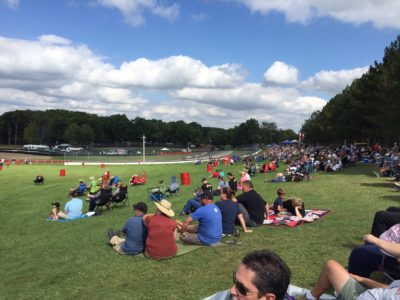In a note recently shared with our 2016 MX-5 Cup customers, we outlined the importance of parity in racing. It began:
“One of the key pillars for the success of the Mazda MX-5 Cup car and series is creating and maintaining parity. Racing is measured in tenths, hundredths, and even thousandths. Any slight advantage can change the outcome of qualifying positions; can mean the difference of making a pass or not; and can alter a championship or racing driver’s career. To provide the value you seek and deserve, a main focus at Mazda is to establish parity among the MX-5 Cup cars and series in which they compete.”
The letter goes on to explain the lengths for we which we have gone to accomplish this. For Spec Miata and all the series our customers compete, we have the same interest. We are fortunate that the SCCA and NASA also share our belief in the importance of maintaining parity. Certainly, the task to accomplish this is most difficult in Club Racing across so many brands, models, years and classes.
Fortunate for all, however, is that the SCCA, NASA, and Mazda came together, perhaps in an unprecedented way, after the 2014 Runoffs. Our teams became one and our focus heightened.
We have always found the leadership team at the SCCA to be very willing to share their practices in an effort to continuously improve. We at Mazda share its drive for continuous kaizen/improvement.
While behind the scenes many at the SCCA and Mazda are working to drive more value to our collective customers, we wanted to share a portion of the tech process that our Spec Miata customers received from the SCCA staff, who are some of the best in the business.
After qualifying sessions, the top six cars were impounded, every day. The following was performed/checked on the Spec Miata class:
• Restrictors (checked and sealed)
• Cylinder heads sealed
• Stall test
• Shocks sealed
• Tires
• Front Sway Bar diameter
• Brake assembly
• Sub-frame bracing
The SCCA also impounded the top six after each race, bringing those who finished on the podium in the tech building for inspection and holding 4-6 in case there was an issue with the top three. The SCCA checked the following for the podium finishers in Spec Miata:
• VIN/Engine match
• Bore/Stroke
• Compression
• Camshafts
• Head Inspection
• Wheel Bearings
• Shocks
1st place in Spec Miata received additional checks on the:
• Crankshaft
• Verify Mazda Internal Components
• Flywheel
• Transmission
• Rear Axle (coatings and ratio)
Spec Miata, for example, went through tech from 12:30 pm to 5:30 pm on Saturday, September 24. John Bauer, Michael Annis, Frank Diringer, and Sam Neave mainly handled the tech; though, there were additional tech staff who assisted.
The SCCA and Mazda have had positive feedback with sealing engines, shocks, etc. during qualifying days versus measuring those items throughout (For efficiency gains and because removing shocks changes the setup of the car). This is another example of the continuous kaizen that will make our racing experience even better.
When we asked John Bauer for additional insight, he commented: “SM compliance is a two-way street. We are always open to feedback and suggestions. I would encourage anybody with questions or input to contact the SCCA Tech Department.”
Mazda is encouraged by the efforts of the SCCA and is encouraged by the likes of SCCA race winner Dean Busk who has provided us with helpful feedback, as well. Keep it coming and keep on it (though, it is okay to lift sometimes, as Eric Prill has said).
Thank you for your support,
Your Mazda Family


 ACCESSIBILITY
ACCESSIBILITY